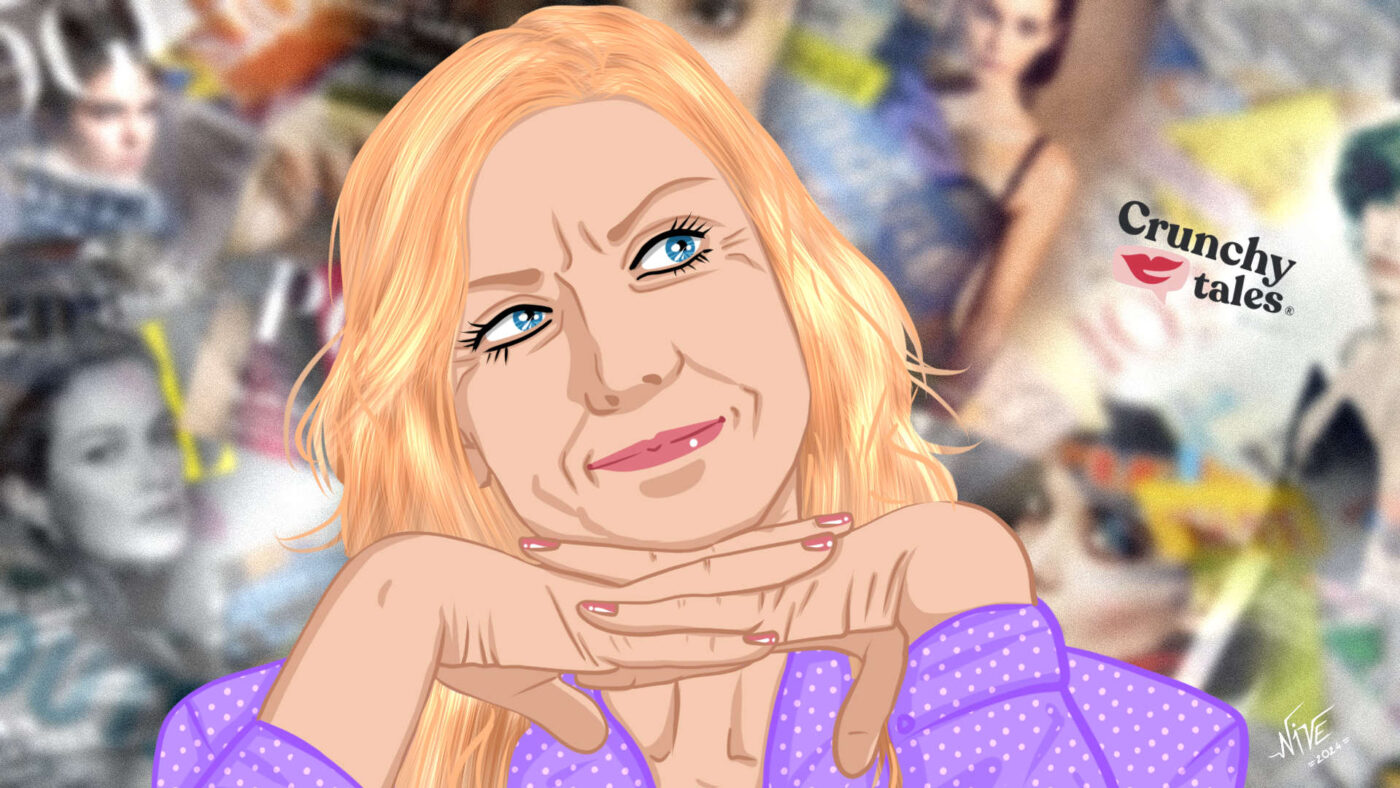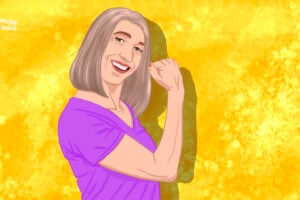Ageism In Advertising Is Real! Let’s fight back
Ageing is often regarded as a time of wisdom, revelation and reawakening, but regrettably, these notions are not reflected in the realm of modern marketing. Actually, the advertising industry is still neglecting to address a prevalent bias that has long been overlooked – ageism- particularly towards the older generations. In this article, ageing mentor Brenda Ackerman will cast a light on the way the media portray midlife women and explore how midlife women can fight ageism, reject stereotypes and stay relevant.
Have you ever felt like the women in advertisements don’t represent you, especially as you navigate mid-life? You’re not alone. As The Behaviours Agency‘s latest report, “Marketing to Midlife Women” reveals, shockingly, 69% of women over 50 feel unseen by brands and advertisers, and 62% believe that advertising aimed at them rarely showcases relatable figures (most of the time people of a certain age are represented as physically weak, lonely or uncomfortable with new technologies).
What’s more, according to the American Association of Retired Persons (AARP), while more than a third of Americans are 50 and over, they appear in just 15% of media images. And a measly 5% of advertising explicitly targets older consumers, as Havas Group stated.
As we live in a world that predominantly celebrates the vibrancy of youth in advertising, ageism is not only alive, but it is thriving in the world of advertising and branding.
Midlife women, a force to be reckoned with
What advertisers seem to miss out on is that midlife women are not just consumers; they are decision-makers with the power to shape brand narratives.
Crunching the numbers, there are 75 million Baby Boomers in the U.S., aged 57 and up, with a combined spending of $548 billion/year. Behind them in purchasing power are Gen Xers (49 million citizens) who are dishing out $357 billion/year.
Only by understanding and respecting the unique needs and perspectives of this demographic, advertisers can gain not just a market share but also loyalty. So, what’s preventing them from being more inclusive and senior-oriented? Part of the problem may rely on the fact that ageism in advertising is frequently fueled by a lack of age diversity among the individuals responsible for creating our ads (less than 10% of workers in the advertising industry are over the age of 45).
The cultural shift towards inclusion shouldn’t just extend beyond showcasing diverse bodies; it should include embracing the natural ageing process.
Fortunately, there is still room for hope. As the number of people over the age of 65 increases, some global brands have started taking steps to reduce ageism in advertising, both for ethical and business motivations. Successful campaigns celebrating not only the beauty but also the strength of mid-life women may serve as beacons of change.
Dove Unilever has notably taken a step in the right direction, for instance, by featuring real women in its advertising, celebrating the beauty of maturity, and rejecting ageist norms. The portrayal of mature women with beautiful curves resonates more with female mid-life women than the prevalent imagery of perfectly sculpted young bodies.
It was also invigorating for us to see Maye Musk and Martha Stewart chosen as cover models for Sports Illustrated Swimsuit Edition magazine.
And how about, Dame Helen Mirren and Jane Fonda who were beautifully captured while radiating confidence on the covers of People and Glamour magazines?
Nevertheless, there is still a long way to go. What the world of advertising should understand is that midlife women are not seeking to reverse time but rather celebrate the wisdom and beauty that come with age, as well as authenticity in representation (the overuse of digital enhancements perpetuates unrealistic beauty standards).
Advertisers, why not encourage women to choose how they want to look and embrace who they are? Why there is constant messaging that looking younger and being thinner is better? Those expectations are not only unrealistic but also insulting.
There are many reasons why we don’t want to go back there. Women have physically, mentally, and emotionally evolved by the time they are in midlife. We are embracing the wisdom and confidence that comes with age. We are celebrating who we are and who we have become through our life journeys and would love to see more real women of all shapes and sizes, including our Hollywood heroines over 50 without retouches.
Toward a more inclusive future
The good thing is the power to effect change lies not just with advertisers but also with consumers. By demanding representation and challenging ageist norms, midlife women can reshape the narrative and pave the way for more inclusive and empowering advertising.
Central to dismantling ageist stereotypes is the sharing of personal stories and testimonials from midlife women but I’ve found there are also other effective ways we can start fighting back.
Some of them include:
- seek out and support brands that do a good job of representing midlife women in their advertising.
- write to companies that don’t represent us well and let them know how you feel. Challenge their messaging.
- use social media to call out companies that ignore midlife women in their ads. We don’t need to bash them about this but educate them about it.
- wield our consumer power with our favourite brands. Let’s start talking with them about it.
- join groups that advocate for better representation of midlife women in advertising. The Geena Davis Institute has done extensive research on gender bias in advertising and has resources available for those who want to learn more.
- complain about ageism when you come across it in the media and advertising, by contacting the Advertising Standards Authority.
Remember, as midlife women, we are a valuable demographic and deserve to be represented in advertising. By speaking up and supporting brands that do a good job of representing us, we can make a difference. Let’s take inspiration from the new theme of the upcoming International Women’s Day: #InspireInclusion and – as suggested by their claims- let’s call out poor practices when women are discriminated against, taking action each time, every time we see their treatment is not fair or equitable.
Above all, when midlife women are not represented in brand advertising, I would also suggest ladies feel empowered to ask, “Why not?” It’s time for brands to see us, celebrate us, and empower us. Because, ladies, we’re worth it.
Like this post? Support Us or Sign up to our newsletter to get more articles like this delivered straight to your inbox!






